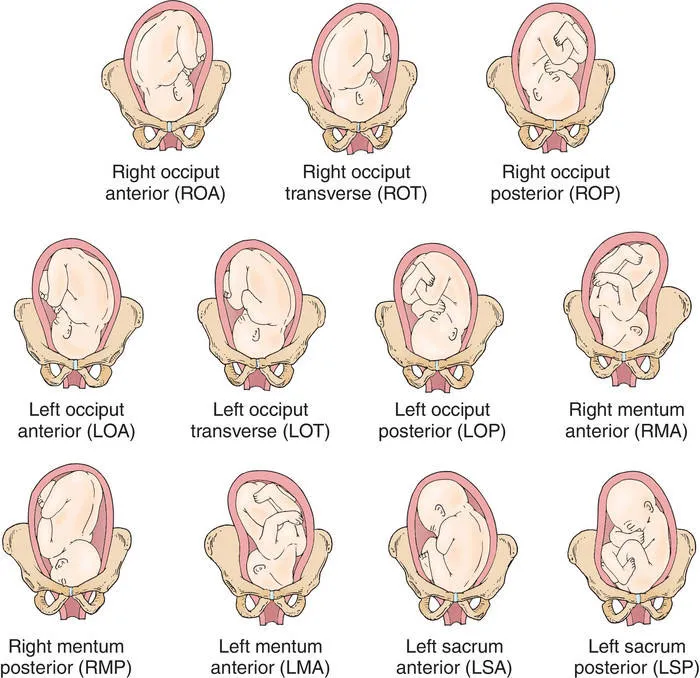Hey Honey!
Are we getting closer to the big day!? Or maybe here educating yourself before pregnancy? Either way......Welcome!!
This post is chatting about the best positions I educate and perform on my clients for upright laboring. These positions also allow room for partner to be near to support as well and perform a light and gentle massage or apply BIG pressure too.
Remember honey, we need oxytocin, the relaxation hormone to help the uterus contract intensely enough to help you push your babee out. Here's a beautiful diagram of how contractions affect your uterus in labor.

(Pic courtesy of The Student Midwife Studygram FB page)

When it comes to active labor, movement and being upright helps to progress your labor. We utilize gravity to labor babee down.
Physiology and new birthing positions are what helps to make room for your babee to labor down and transition to the next stage of labor & birth. (Spinning Babies)

Knowing your body and all the sensations you feel will serve as an anticipatory guide to give doulas or partners signs to inform and allow your birth team to prepare.
Fetal positioning sometimes called belly mapping is an important skill not only child educators should have but parents too.
Where's the babee?
Optimal fetal positioning is key to achieving a desired vaginal birth. Remaining upright can also possibly lessen the time of your labor or be a catalyst for a stalled labor into active labor again.

In order to do this we need to know three things:
How much is the cervix dilated?
What is cervical effacement (thinning)?
What station is babee presenting?
Of course, to progress from active labor to the transitioning phase, the cervix needs to soften and dilate fully to 10cm. Your babee also needs to be at a "0" station number or higher, and effacement needs to be at 100%.
The lower the fetal station, the further your babee has to travel into the birth canal. The goal is for babee to be in an optimal laboring position facing towards your butt.
Babees can settle into any position but usually once they are head down around 30-32 weeks and remain that way until delivery but sometimes babees reposition themselves slightly and need a little help making their way back to the center of the pelvis making contact with the cervix to make their way Earthside.

So what do I do when active labor begins?? What you should focus on is relaxing and remembering to remain upright when labor begins. A few birthing tools I use are the CUB chair, birth and peanut balls to achiev this comfortably with my honeys as each have their own different use for stages of labor.

But one place that is a great place to start if you don't have any tools is just a good old fashioned toilet or the “Dilation Station” us birth workers call it, which can aid in labor progression tremendously to accomplish the three tips listed below. Reminder honey, switch position facing forward and backwards every 15-20 minutes or so.
Think “UFO” when labor begins, honey!
U - Upright
The lower part of your spine can move better when you are upright. This means the birth canal can widen and make room for the baby's head. Pelvic joints can expand and move which means less pressure on nerves. Upright positions include sitting, standing, walking, and kneeling.

F- Forward Leaning
Choosing standing positions that are forward leaning onto your partner, over a birth or peanut balm will allow babee’s body to shift into a position where they will face your back and be in a position that will allow labor to progress more comfortably without back discomfort and possibly allow the cervix to dilate more efficiently. Forward leaning inversion, a laboring position done with skilled assistance, helps to allow the lower uterus, cervix and ligaments space in order to settle in a comfortable position before the babee is attempting to descend. It’s also helpful to reduce back pain, hip pain, or tailbone pain.

O- Oxytocin/Open
Being open mentally and physically helps to relax your body and increase the birth hormone oxytocin. Oxytocin is responsible for contracting the uterus intensely enough to birth your babee. Remaining calm while you relax the muscles of your head and face, releasing tension down the back or your neck and dropping your shoulders helps to keep you open and lean in to those surges rather than running from them. You can try tensing and relaxing down your chest, abdomen, and back, all the way down your legs to your toes. Breathe slowly and deeply, releasing more and more with each exhalation. Focusing on releasing tension in the jaw while sitting on the toilet and jiggling techniques help to release the tension in the pelvic floor for labor progression.
You can do this honey.....with proper education and committed support.
Ready for the longest workout of your life?!?

I'm Jada and I'd love to help achieve your birth vision. Prenatal education helps to build confidence and self efficacy. If you're looking for skilled birth to breastfeeding education or in person group or private doula support, book a free consultation and to get started with classes, support, trainings and more.
---------------------------------------------------------------------
